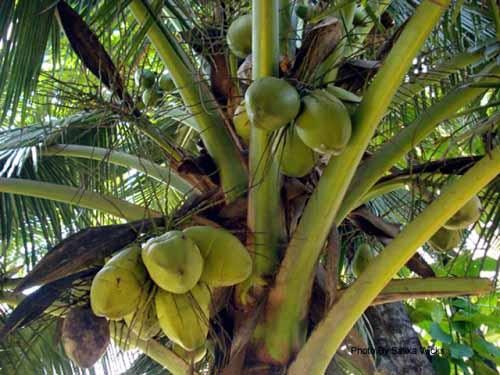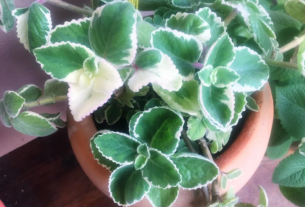By Tommy Clarkson from the April 2018 Edition
Pandanus veitchii ‘Variegata’ Family: Pandanaceae
Also known as: Variegated Hala, Screw Palm or Pandanus Palm
(This beauty’s origin? Madagascar, maybe. Southern Asia, perhaps. New Britain, closer perchance. Or is it, in fact, Australia? Finding definitive, confirmation of this plant’s beginnings is scarcer than locating native palm trees in North Dakota!)
Let’s agree on that last “Down Under” locale. Thus, with my best Aussie accent, I’ll say that “It’s fair dinkum that I’m a lizard drinking trying to understand this dog’s breakfast of the ridgy didge name for this tree.” (Good for you if you can figure that out!)
Actually, members of the Pandanus genus are not trees such as oak, apple or pine but rather, monocots and distantly related to palms, bananas, true pineapples and lilies.
The origin of the name Pandanus comes from the Indonesian/ Malay name of the tree, “Pandan.” But for such a “confused name” plant, it’s an attractive garden addition in the right location!
This fascinating plant is one of approximately 600 – 750 salt-tolerant vine and tree-type species that grow wild, primarily by watercourses or along coastal seashores. The first part of its common name is derived from the manner in which its long leaves grow and arrange themselves in a rather, pleasing-in-appearance, screw-like manner.
Their interesting looking, prop roots are nature’s way of lending support for those of this species choosing to live on beaches. In The Tropical Look, Robert Lee Riffle succinctly states, “Aerial, stilt and brace roots are produced from the lower portions of the trunks and mature plants are usually broader than they are wide with the branches spreading horizontally like a Strangler Fig.”
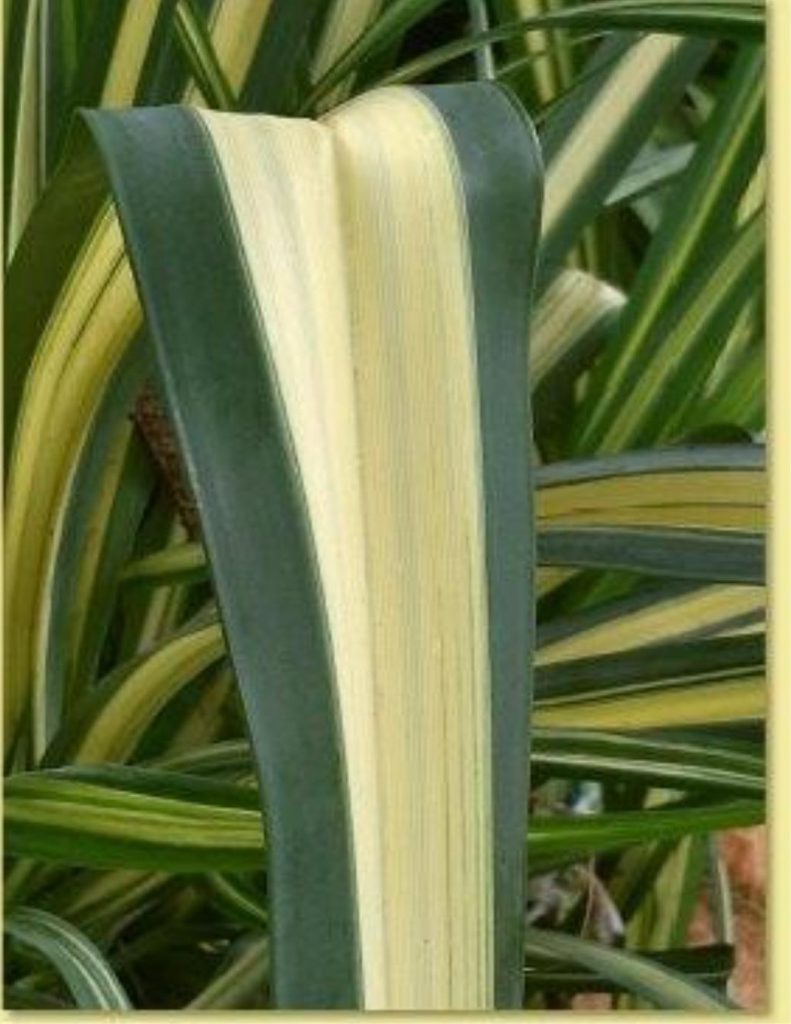
Unlike the wholly green Pandanus utilis that has spiny barbs on its leaf edges; those of the Pandanus veitchii ‘Variegata’ are totally smooth. The former variety, however, does, sport sharply toothed margins on, often pleated, razor-like sword-shaped leaves. And to make it worse there’s another row of teeth along the midrib. Suffice it to say, these aren’t a “Let’s hold fronds by the campfire and sing Kumbaya” type of plant pals! The Variegated Screw Pine is much more one’s friend!
Pandanus are unisexual (single-sexed) with inflorescences on different plants, preferring hot, dry conditions. They are, nonetheless, highly adaptable plants with specimens growing quite large, twenty to twenty-six feet (6.1 to 7.92 meters) in height. Hence location must be considered if planted in one’s gardens.
Its large roundish fruits resemble pine cones or pineapples (Might this be where the “Pine” name came from? Me thinks perhaps!) While these fruits are green when young they turn a yellow, orange or brownish-orange when ripe. As on-line, Australian naturalist Outback Joe has observed, “The fruit separates into…incredibly hard… wedges… housing several small almond like nuts [that] are incredibly hard and difficult to extract. [These] taste good though, with a flavour similar to almonds [and are] high in fat and protein so provide good energy, if you can get to it.”
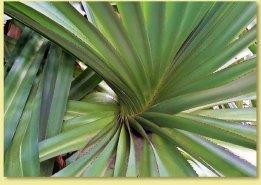
razor-like sword-shaped leaves.
They’re drought tolerant, but like any plant, they’ll do much better with regular watering but don’t expect them to grow superfast! The easiest method of propagation is by cuttings which root readily when placed directly in the soil.
The leaves are used for weaving clothing material, baskets, mats and shelters. I’ve read that mashed leaves can be used to cure headaches when tied around the head I’m trying to picture that! Seeds from the large, pineapple blike fruit can be ground into flour. And, it’s said to be used for treating inflammation by wrapping the leaves around the swollen area. Other sources, to which I have turned, cite that various handicrafts are made from them such as bags, hats, pocketbooks, umbrellas and dolls…. one even asserts that sails have been made from them!
There are around thirty species of Pandanus growing in Australia’s tropical and sub-tropical climes. The ancient Burarra people of that continent use the plant to make fish traps. Some of those original residents made dye from the roots and used it in rock art painting. And, those crafty aboriginals clearly have long believed in “waste not, want not” as they used the top leaves for baskets, ate the fruit and then employed the dead trunks to carry fire with them in the form of smoldering embers which were of use the entire day!
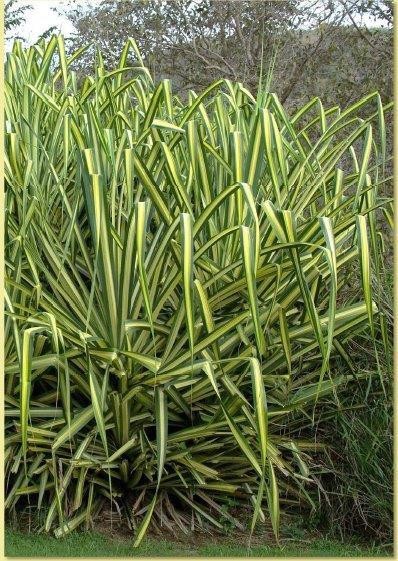
That all having been said, should you have one for your own garden? Yep, if you’ve ample space!
Download the full edition or view it online
—
Tommy Clarkson is a bit of a renaissance man. He’s lived and worked in locales as disparate as the 1.2 square mile island of Kwajalein to war-torn Iraq, from aboard he and Patty’s boat berthed out of Sea Bright, NJ to Thailand, Germany, Hawaii and Viet Nam; He’s taught classes and courses on creative writing and mass communications from the elementary grades to graduate level; He’s spoken to a wide array of meetings, conferences and assemblages on topics as varied as Buddhism, strategic marketing and tropical plants; In the latter category he and Patty’s recently book, “The Civilized Jungle” – written for the lay gardener – has been heralded as “the best tropical plant book in the last ten years”; And, according to Trip Advisor, their spectacular tropical creation – Ola Brisa Gardens – is the “Number One Tour destination in Manzanillo”.

